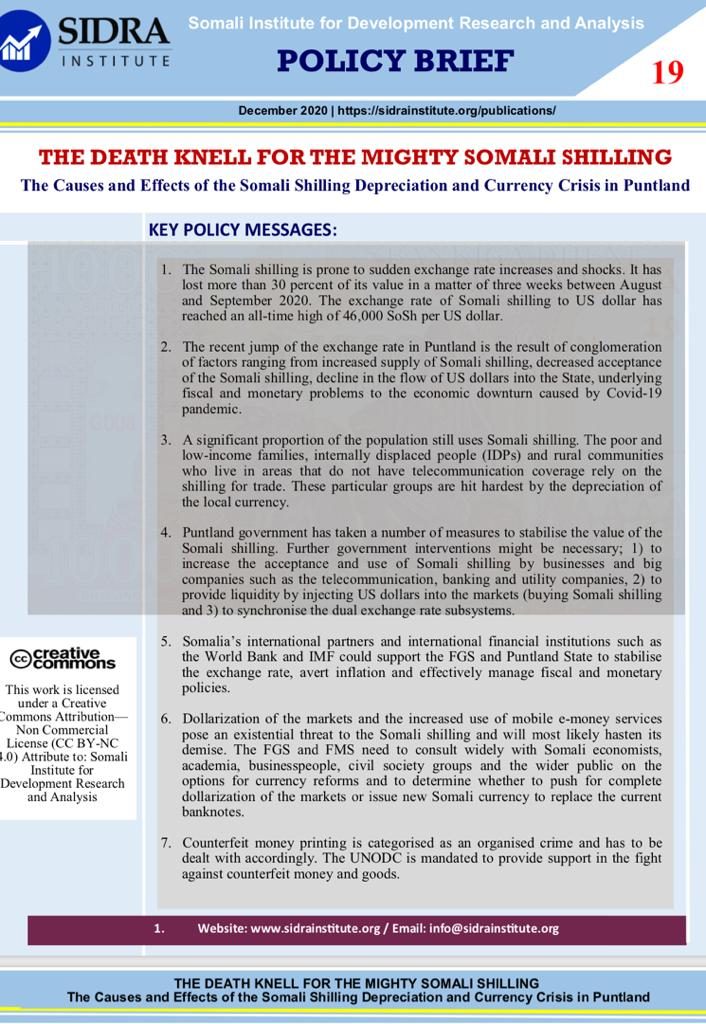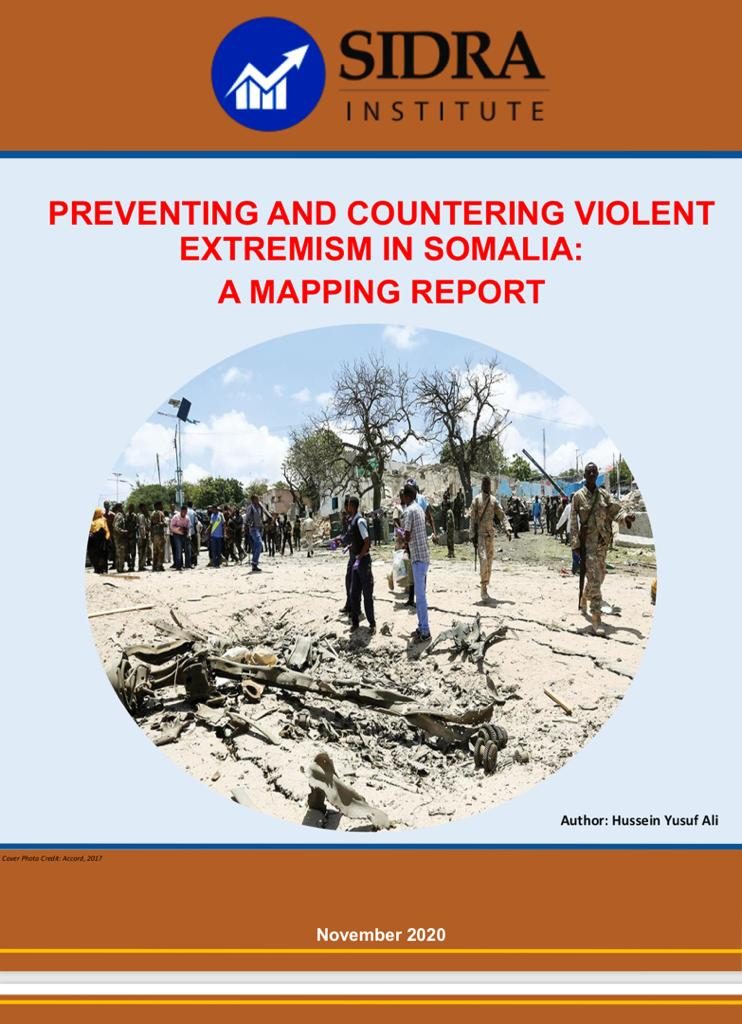THE DEATH KNELL FOR THE MIGHTY SOMALI SHILLING: The Causes and Effects of the Somali Shilling Depreciation and Currency Crisis in Puntland
The use of the Somali sovereign currency (the Somali shilling) has endured in spite of decades of conflict, state failure and fragility and the absence of a central bank in Somalia. The currency has experienced continuing depreciation and declining use due to a conglomeration of factors; the dollarization of the markets, the increasing use of mobile e-money and an influx of counterfeit money. The surprise recent rise in the exchange rate of Somali shilling to US dollar in Puntland, where it reached an all-time high of 46,000 SoSh per US dollar in November 2020, has caused concern among policy makers, businesspeople and the wider Somali public. SIDRA has conducted a research study in October – November 2020 to examine the available evidences on the causes of the current sharp decline of the value of the Somali shilling in Puntland, sings of inflation and the effects of this depreciation on the poor and low-income families, the State and the wider public. The study explored the underlying fiscal and monetary problems of the Somali shilling depreciation and briefly summarizes the difficulties faced by the monetary institutions such as the Central Bank of Somalia and Puntland State Bank to stabilise the local currency. The turbulent relationship and disagreements between the FGS and FMS over a raft of issues have eclipsed many important debates on peace and state building such as currency reforms. This study brings the debate over a new Somali currency to the fore and poses the question whether “the Somali shilling can withstand the multidimensional onslaught on its acceptability and value this time round?”


